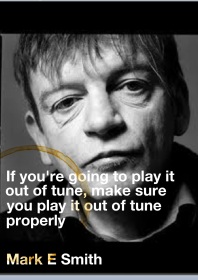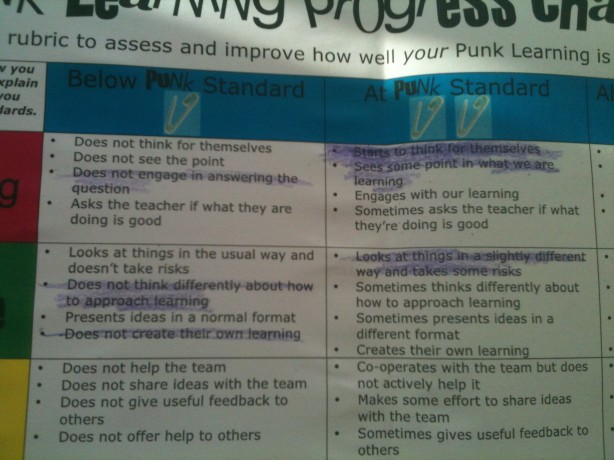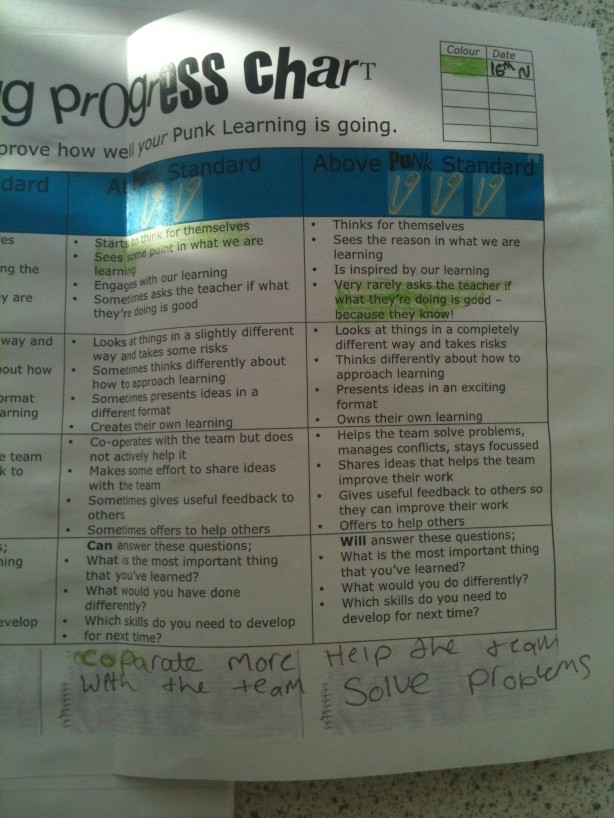“Then I saw that I was really the same. So this link’s breaking away from the chain. Away from the numbers. Away from the numbers. Is where I’m gonna be. Away from the numbers. Away from the numbers. Is where I am free” Away from the Numbers – The Jam
Student X has achieved a level 5b.
What does this actually mean? Is Student X a good learner? Is Student X a level 5b at everything they try and do? How does Student X get to the next arbitrary level? Does Student X actually know what a level 5b represents? Does the teacher? Is a 5b in English equivalent or as difficult to achieve as a 5b in MFL? If I type in 5b in a spreadsheet do I know how good a learner that student is, or the potential they have?
Don’t get me wrong, I am perfectly aware that data is important (as long as it is used effectively to plan for learning) but can we really measure learning using numbers and letters? I’m not so sure…
Learning is messy. Learning is multi faceted. Learning is not linear. Learning is not incremental. Learning is too complex to hang numbers on to.
“Anger is an energy” Rise – Public Image Limited
And so I find myself angered at what I constantly read, see and hear when it comes to number chasing and classifying learning into neat, singular arbitrary levels.
Rather than blathering on about hypothetical ideal scenarios or talking about what teachers could do, or what schools should do, I’m going to tell you what the Punk Learners have been doing in my classroom.

Each group has created their driving question; by answering the question successfully they will learn the content of the topic.

Each group has used SOLO Taxonomy to plan WHAT they need to learn and HOW they will learn it (including deciding on resources). Ultimately they are planning their own Scheme of Learning. Complete Control
Although each group are working on successfully answering their own questions, they will all have the opportunity to fully understand the content of the topic that we are looking at but at different depths of understanding. You could call this Self Organised Differentiation or SOD for short.
I know my students well, I know which students need more help than others and which students need the freedom to soar. So one of my jobs was to coach two groups in encouraging them to tweak and improve their questions in order for them to have the full possibility of reaching an answer that will allow them to learn and understand the topic. This Self Organised Differentiation was developed by Omnipresent Facilitator Feedback, or SOD OFF.
So on our Learning walls, constantly on display in the rooms, we have: what a Punk Learner is, skills a Punk Learner needs, our driving questions and how we will answer them and full size diagrams of what the students believe the human digestive system looks like; I’m using these misconceptions to enable effective feedback to groups on what they know or don’t know. We are using this for whole class assessment and progress – or as we like to call it, learning.

One of our Punk Learning Walls
We have group assessment and progress, or affectionately known by the Punk Learners as learning, via the chart below. Each SOLO level has content attached to it (not shown in picture) which allows students to see where they’re at and what they need to do to get to the next level.
Which leads us on to assessing individual learning…
I have created a Punk Learning rubric that focuses on attributes that my students are working towards: DIY Learning (which the more I think about it could be described as Self Regulation a la Hattie) Being Creative, Team Work and Being Reflective. The “levels” we have used are below Punk standard, at Punk standard and above Punk standard. This simple rubric allows the students to self assess what they are doing well and what their next steps are to improve.
“Oh we make the standards and we make the rules. And if you don’t abide by them you must be a fool. We have the power to control the whole land. You never must question our motives or plans” Standards – The Jam
If I created the rubric and statements it wouldn’t have been Punk Learning. So I asked my students to look at my first draft and critique it for improvements – I must have taught them well; they changed it considerably! Including the colour coding and date idea, the safety pins, the font and the space for targets. This is now an assessment framework designed and agreed on by my students.
So there you have it – assessment, without a number in sight…just a few safety pins!
Here’s a quote from the legend that is Ron Berger about “Assessment not being just about the final product”
“Teachers often mistakenly presume that a project’s final product is the only thing they should assess, which leads them to assume that they should be able to tell whether the kids learned what they needed to learn by looking at the final product. Actually, assessing what kids know is ongoing throughout a project. The product is the motivation for learning the material, but it won’t demonstrate that they learned it all. You need to do assessment throughout the project so that when they’re doing great artistic stuff, you know that they know what they need to know. You can’t leave it all to the end.” Work that Matters










[…] work rubric: Similar to Tait’s Punk Learner rubric, this is about students self and peer assessment to start a conversation and reflection about their […]
[…] work rubric: Similar to Tait’s Punk Learner rubric, this is about students self and peer assessment to start a conversation and reflection about their […]
[…] work rubric: Similar to Tait’s Punk Learner rubric, this is about students self and peer assessment to start a conversation and reflection about their […]
I love this blog. Great blog.
[…] “Then I saw that I was really the same. So this link’s breaking away from the chain. Away from the numbers. Away from the numbers. Is where I’m gonna be. Away from the numbers. Aw… […]
So true, and thanks for sharing what you’re doing.
I think the straight line trajectory is more akin to what the powers that be want success to look like (because it would make it all so much easier), rather than what they think it looks like.
If it’s the latter we are truly doomed! 😉
Brilliant.